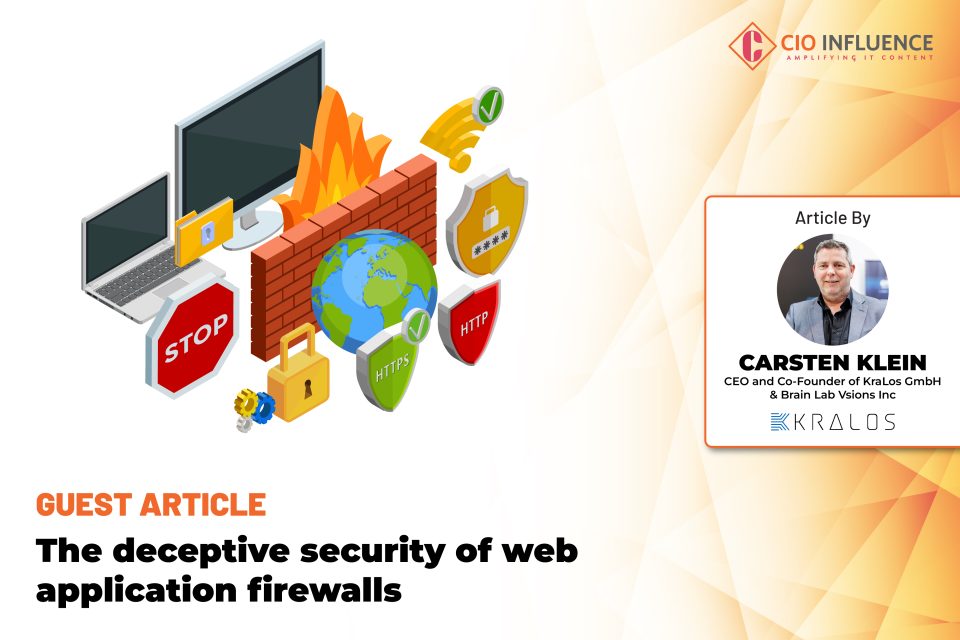Why they often fall short and what alternatives exist
Web application firewalls (WAFs) are an important component of modern IT security infrastructures and serve to protect web applications from a variety of threats, such as SQL injection, cross-site scripting (XSS) and DDoS attacks. However, despite their importance, WAFs often only offer deceptive security. In many cases, they are not sufficient to fully defend against today’s complex and dynamic threats. This article looks at the weaknesses of WAFs and highlights alternative security approaches that can provide a more robust defense.
Also Read: Cloud and AI: Data management and data protection are primary pain points for CIOs and CISOs
Weaknesses of web application firewalls
1. Signature-based detection:
WAFs often rely on signature-based detection methods, similar to traditional antivirus programs. However, this method is only as good as the signature database used. New or unknown attacks that are not yet recorded in the database can remain undetected. Attackers are increasingly using zero-day exploits or polymorphic techniques to circumvent detection.
2. Incorrect configuration and false alarms:
WAFs must be carefully configured to be effective. Incorrect configuration can lead to either over-blocking (false positives), which disrupts legitimate traffic, or under-blocking (false negatives), where dangerous traffic is not recognized. Managing and tuning a WAF requires considerable resources and expertise.
3. Evasion techniques:
Attackers are constantly finding new ways to circumvent WAFs. Techniques such as disguising attack code, fragmenting HTTP requests or using injections in HTTP headers are just a few examples of how security mechanisms can be bypassed. WAFs can often do little against such methods, especially if the attackers specifically target the specific weaknesses of the firewall.
4. Lack of protection against internal threats:
WAFs are primarily designed to ward off external attacks. However, they offer little protection against internal threats, such as insider attacks or attacks that occur via legitimate but compromised access points. In such cases, the damage can be considerable, as the attack does not occur via the typical attack surface of a web application.
Alternatives and additions to WAFs
Given the limitations of WAFs, it is important to consider additional security measures that provide a more comprehensive defense:
1. Risk-based authentication and access controls:
The use of multi-factor authentication (MFA) and role-based access controls can significantly improve security by restricting access to sensitive data and functions to authorized users. Monitoring user activity in real time can also help to quickly identify and respond to unusual behavior.
2. WAAB Web Application Api’s Bouncer (WEBOUNCER)
digital twin means no more data is available on the web, with its real-time protection and new encryption method WEBOUNCER, unlike all alternatives, keeps everything in one central cockpit to protect your web application.
3. Intrusion detection and prevention systems (IDPS):
IDPS can monitor suspicious activities at network level and respond to them automatically. In contrast to WAFs, which focus on application logic, IDPSs analyze the entire network traffic pattern and thus provide an additional layer of protection that can ward off various types of attacks.
Also Read: Implementing a Digital Adoption Platform in Your Organization? This can help!
4. Web security scanning and penetration testing:
Regular security checks, including automated web security scanning and manual penetration testing, help to identify vulnerabilities in web applications before they can be exploited by attackers. These measures go beyond the reactive nature of WAFs and enable a proactive security strategy.
5. Zero trust architecture:
The zero-trust architecture approach assumes that no component, whether internal or external, is automatically considered trustworthy. Every request is validated regardless of its origin before access is granted. This approach minimizes the risk of compromised systems or users bypassing the security measures.
6. Security information and event management (SIEM):
SIEM systems collect and analyze security-related events in real time and provide a comprehensive overview of potential threats. By integrating WAF logs and other security data, SIEM systems can recognize patterns that indicate complex or combined attacks.
7. Content security policies (CSP) and security headers:
Implementing CSPs and other application-level security headers can help prevent attacks such as XSS by instructing the browser to trust only specific, trusted sources. This measure significantly reduces the attack surface and complements the work of a WAF.
Web application firewalls are a valuable tool in the IT security armory, but they should not be seen as the sole protection mechanism. Their limitations make them vulnerable to modern and sophisticated attacks. By utilizing a holistic approach to security that integrates multiple layers of protection and modern technologies, the security of web applications can be significantly enhanced. WAFs remain an important component, but should be complemented by additional security measures to ensure a robust and resilient IT infrastructure.
[To share your insights with us as part of editorial or sponsored content, please write to psen@itechseries.com]


